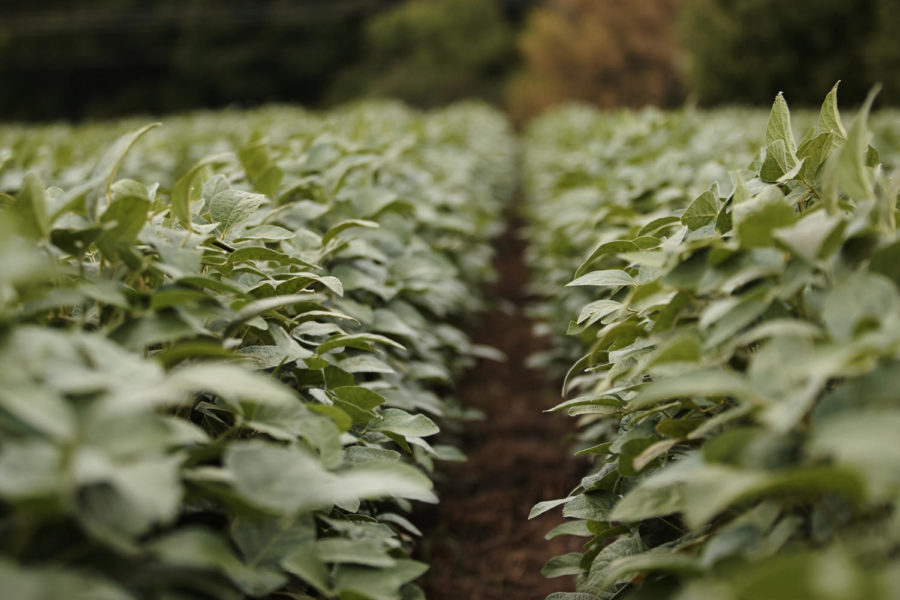Study finds a way to increase protein yield in legumes
Soybeans near maturity in a soybean field south of the Cap Timm Field.
January 16, 2020
The main source of protein in products like protein shakes, powders and bars almost all come from soybeans and other legumes. Researchers at Iowa State are looking to improve the extraction process of proteins from legumes and make the most of them in food applications.
Food science and human nutrition graduate students Bibek Byanju and Mahfuz Rahman, under the direction of associate professor Buddhi Lamsal, have been using high-power sonication to extract protein from defatted soybean flakes and flour. Conventional methods allow 50 percent of the protein to be extracted, but the researchers hope to extract closer to 70 percent with their method.
Sonication is “the act of applying sound energy to agitate particles in a sample, for various purposes such as the extraction of multiple compounds from plants, microalgae and seaweeds,” according to the Science Direct website.
Both industry and society may be able to benefit from the results if they are successful in their research, and the findings will also be able to help evaluate the sonic-assisted plant protein extraction and processing technology at larger scales.
The ability to extract larger amounts of protein from legumes will allow processors to increase their profits in the plant protein market. Consumers would benefit from having more choices of nutritious and healthy ingredients in their foods.
Funding for this research comes from a $427,000 United States Department of Agriculture grant the group received two years ago.
“There’s been a lot of interest recently in plant-based proteins and their health benefits, and legumes are a major source of protein,” Lamsal said of what prompted them to conduct this research project.
The researchers take into account the quality and quantity of the protein they are extracting, making sure the protein’s quality does not decrease as higher amounts are extracted.
Like most hands-on research, Byanju and Rahman have learned how to work with proteins in the laboratory and how to plan a research project through working on this project. The two of them said they have also gained experience in determining the nutritional and functional properties of proteins.
“Soybean is an annual legume of the pea family and its edible seed,” according to the Encyclopaedia Britannica website. “The soybean is economically the most important bean in the world, providing vegetable protein for millions of people and ingredients for hundreds of chemical products.”
The soybean is one of the cheapest and richest sources of protein and is a staple in the diets of people and animals in numerous parts of the world. The seed contains 17 percent oil and 63 percent meal, 50 percent of which is protein, according to the Encyclopaedia Britannica website. Because soybeans contain no starch, they are a good source of protein for diabetics.
Modern research has led to a remarkable variety of uses for the soybean, according to the Encyclopaedia Britannica website.
Soybean oil can be processed into margarine, shortening and vegetarian cheeses. Industrially, the oil is used as an ingredient in paints, adhesives, fertilizers, sizing for cloth, linoleum backing and fire-extinguisher fluids, among other products.
Soybean meal serves as a high-protein meat substitute in many food products, including baby foods and vegetarian foods, and can be imparted with a meatlike texture for increasing the cooked yield of ground meats.







